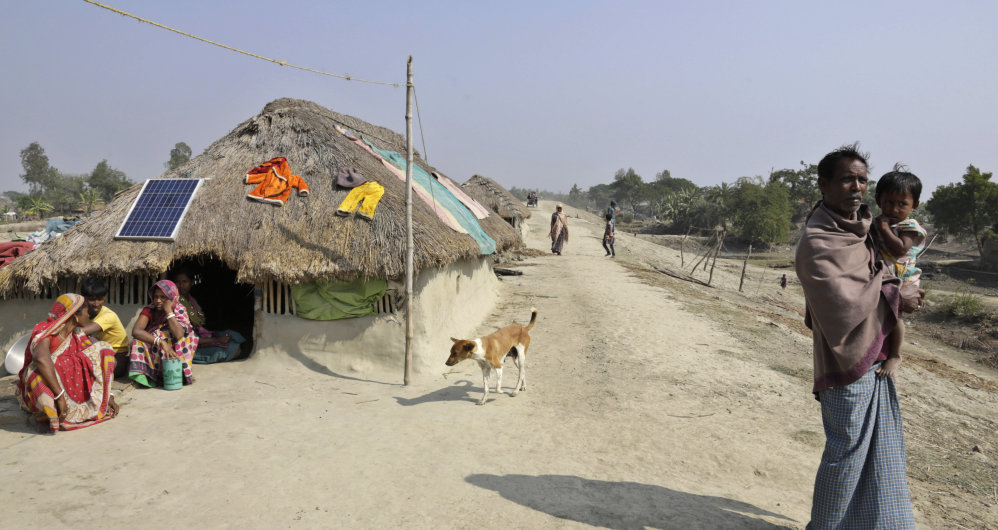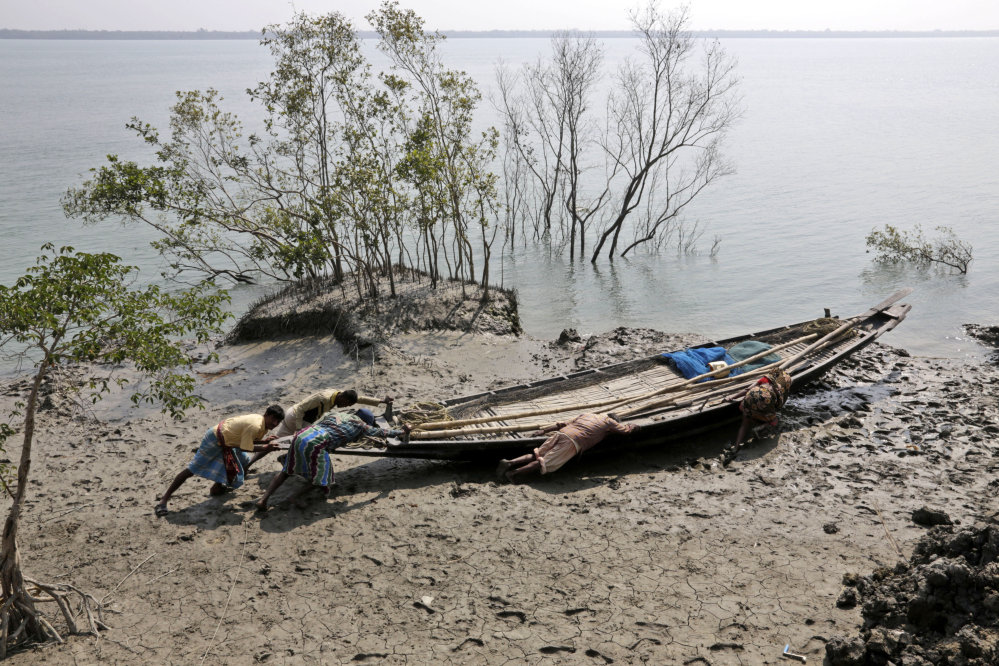BALI ISLAND, India — The tiny hut sculpted out of mud at the edge of the sea is barely large enough for Bokul Mondol and his family to lie down in. The water has taken everything else from them, and one day it almost certainly will take this, too.
Saltwater long ago engulfed the 5 acres where Mondol once grew rice and tended fish ponds, as his ancestors had on Bali Island for some 200 years. His thatch-covered hut, built on public land, is the fifth he has had to build in the last five years as the sea creeps in.
“Every year we have to move a little further inland,” he said.
Seas are rising more than twice as fast as the global average here in the Sundarbans, a low-lying delta region of about 200 islands in the Bay of Bengal where some 13 million impoverished Indians and Bangladeshis live. Tens of thousands like Mondol have already been left homeless.
That could force a singularly massive exodus of millions of “climate refugees,” creating enormous challenges for India and Bangladesh that neither country has prepared for.
“This big-time climate migration is looming on the horizon,” said Tapas Paul, a New Delhi-based environmental specialist with the World Bank, which is spending hundreds of millions of dollars assessing and preparing a plan for the Sundarbans region.
“If all the people of the Sundarbans have to migrate, this would be the largest-ever migration in the history of mankind,” Paul said. The largest to date occurred during the India-Pakistan partition in 1947, when 10 million people or more migrated from one country to the other.
Mondol has no idea where he would go. His family of six is now entirely dependent on neighbors who have not lost their land. Some days they simply don’t eat.
“For 10 years I was fighting with the sea, until finally everything was gone,” he says, staring blankly at the water lapping at the muddy coast. “We live in constant fear of flooding. If the island is lost, we will all die.”
On their own, the Sundarbans’ impoverished residents have little chance of moving before catastrophe hits. Facing constant threats from roving tigers and crocodiles, deadly swarms of giant honeybees and poisonous snakes, they struggle to eke out a living by farming, shrimping, fishing and collecting honey from the forests.
“You cannot fight with water,” said Sorojit Majhi, a 36-year-old father of four young girls living in a hut crouched behind a crumbling mud embankment. Majhi’s ancestral land has also been swallowed by the sea. He admits he’s sometimes angry, other times depressed.
“We are scared, but where can we go?” he said. “We cannot fly away like a bird.”
Send questions/comments to the editors.




Comments are no longer available on this story